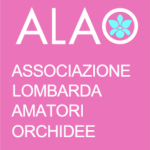Intermedia
[/spb_icon_box] [spb_icon_box title=”Temperatura” box_type=”animated” image=”ss-thermometer” color=”standard” target=”_self” animation=”none” animation_delay=”0″ width=”1/3″]
15°C – 30°C
[/spb_icon_box] [spb_icon_box title=”Luce” box_type=”boxed-two” image=”ss-sun” color=”standard” target=”_self” animation=”none” animation_delay=”0″ width=”1/3″ el_position=”last”]
[/spb_icon_box] [blank_spacer height=”30px” width=”1/1″ el_position=”first last”] [spb_icon_box title=”Umidita’” box_type=”animated” image=”ss-rainumbrella” color=”standard” target=”_self” animation=”none” animation_delay=”0″ width=”1/3″ el_position=”first”]
80%
[/spb_icon_box] [spb_icon_box title=”Acqua” box_type=”boxed-two” image=”ss-droplet” color=”standard” target=”_self” animation=”none” animation_delay=”0″ width=”1/3″]
[/spb_icon_box] [spb_icon_box title=”Fertilizzazioni” box_type=”boxed-two” image=”fa-eyedropper” color=”standard” target=”_self” animation=”none” animation_delay=”0″ width=”1/3″ el_position=”last”]
[/spb_icon_box] [blank_spacer height=”30px” width=”1/1″ el_position=”first last”] [spb_icon_box title=”Ventilazione” box_type=”boxed-two” image=”ss-tornado” color=”standard” target=”_self” animation=”none” animation_delay=”0″ width=”1/3″ el_position=”first”]
[/spb_icon_box] [spb_icon_box title=”Media e rinvaso” box_type=”boxed-two” image=”ss-macchiato” color=”standard” target=”_self” animation=”none” animation_delay=”0″ width=”1/3″]
[/spb_icon_box] [spb_icon_box title=”Riposo” box_type=”animated” image=”fa-history” color=”standard” target=”_self” animation=”none” animation_delay=”0″ width=”1/3″ el_position=”last”]
No
[/spb_icon_box] [spb_text_block pb_margin_bottom=”no” pb_border_bottom=”no” width=”1/1″ el_position=”first last”]
Passate con il cursore sulle caselle per girarle e svelarne il contenuto; le caselle piu’ piccole non hanno dei dettagli da svelare
[/spb_text_block] [/spb_column] [blank_spacer height=”30px” width=”1/6″ el_position=”last”] [blank_spacer height=”30px” width=”1/1″ el_position=”first last”] [spb_row row_bg_type=”image” parallax_image_height=”content-height” parallax_image_movement=”fixed” parallax_image_speed=”0.5″ parallax_video_height=”window-height” parallax_video_overlay=”none” row_overlay_opacity=”0″ width=”1/1″ el_position=”first last”] [divider type=”go_to_top_icon1″ text=”Torna su” full_width=”no” el_class=”generalita” width=”1/1″ el_position=”first last”] [spb_column width=”1/2″ el_position=”first”] [spb_single_image image=”4708″ image_size=”full” frame=”noframe” intro_animation=”none” full_width=”no” lightbox=”yes” link_target=”_self” caption=”Zygopetalum aussie trance” width=”1/1″ el_position=”first last”] [/spb_column] [spb_column width=”1/2″ el_position=”last”] [blank_spacer height=”100px” width=”1/1″ el_position=”first last”] [spb_single_image image=”4710″ image_size=”full” frame=”noframe” intro_animation=”none” full_width=”no” lightbox=”yes” link_target=”_self” caption=”Zygopetalum ibrido” width=”1/1″ el_position=”first last”] [/spb_column] [spb_text_block title=”Generalita’” icon=”generalita” pb_margin_bottom=”no” pb_border_bottom=”no” width=”1/1″ el_position=”first last”]
Il genere Zygopetalum, originario dell’America Meridionale, comprende una ventina di specie molto amate dagli orchidofili per i colori, per la facilità con cui rifioriscono e soprattutto per il piacevole profumo.
Negli ultimi decenni sono stati creati ibridi molto fioriferi ed estremamente adattabili che hanno reso questo genere sempre più apprezzato dagli amanti delle orchidee.
[/spb_text_block] [/spb_row] [spb_row row_bg_type=”image” parallax_image_height=”content-height” parallax_image_movement=”fixed” parallax_image_speed=”0.5″ parallax_video_height=”window-height” parallax_video_overlay=”none” row_overlay_opacity=”0″ width=”1/1″ el_position=”first last”] [spb_column width=”2/3″ el_position=”first”] [divider type=”go_to_top_icon1″ text=”Torna su” full_width=”no” el_class=”generalita” width=”1/1″ el_position=”first last”] [spb_text_block title=”Habitat” pb_margin_bottom=”no” pb_border_bottom=”no” width=”1/1″ el_position=”first last”]
Come tutte le altre orchidee epifite, gli Zygopetlum hanno come habitat naturale le foreste tropicali ma con la particolarità però di vivere sui rami bassi degli alberi, più all’ombra, più umidi e coperti di muschio. Queste caratteristiche fanno sì che le cure colturali di queste orchidee siano del tutto peculiari.
[/spb_text_block] [divider type=”go_to_top_icon1″ text=”Torna su” full_width=”no” el_class=”generalita” width=”1/1″ el_position=”first last”] [spb_text_block title=”Temperatura” pb_margin_bottom=”no” pb_border_bottom=”no” width=”1/1″ el_position=”first last”]
Il loro biotopo tipo è quello della montagna e per questo motivo non amano ambienti troppo caldi e secchi, la temperatura notturna ideale in inverno è di 15°C, anche se gli ibridi moderni sono assai adattabili.
[/spb_text_block] [/spb_column] [spb_column width=”1/3″ el_position=”last”] [blank_spacer height=”30px” width=”1/1″ el_position=”first last”] [spb_single_image image=”4707″ image_size=”full” frame=”noframe” intro_animation=”none” full_width=”no” lightbox=”yes” link_target=”_self” caption=”Zygopetalum pedicellatum” width=”1/1″ el_position=”first last”] [/spb_column] [/spb_row] [spb_row row_bg_type=”image” parallax_image_height=”content-height” parallax_image_movement=”fixed” parallax_image_speed=”0.5″ parallax_video_height=”window-height” parallax_video_overlay=”none” row_overlay_opacity=”0″ width=”1/1″ el_position=”first last”] [spb_column width=”1/3″ el_position=”first”] [blank_spacer height=”30px” width=”1/1″ el_position=”first last”] [spb_single_image image=”4706″ image_size=”full” frame=”noframe” intro_animation=”none” full_width=”no” lightbox=”yes” link_target=”_self” caption=”Zygopetalum mackayi” width=”1/1″ el_position=”first last”] [/spb_column] [spb_column width=”2/3″ el_position=”last”] [divider type=”go_to_top_icon1″ text=”Torna su” full_width=”no” el_class=”generalita” width=”1/1″ el_position=”first last”] [spb_text_block title=”Luce” pb_margin_bottom=”no” pb_border_bottom=”no” width=”1/1″ el_position=”first last”]
Sono piante che amano ambienti poco illuminati, o addirittura ombrosi, in estate ombra profonda.
[/spb_text_block] [divider type=”go_to_top_icon1″ text=”Torna su” full_width=”no” el_class=”generalita” width=”1/1″ el_position=”first last”] [spb_text_block title=”Umidita’” pb_margin_bottom=”no” pb_border_bottom=”no” width=”1/1″ el_position=”first last”]
Le loro radici non devono mai asciugare completamente.
[/spb_text_block] [/spb_column] [/spb_row] [spb_row row_bg_type=”image” parallax_image_height=”content-height” parallax_image_movement=”fixed” parallax_image_speed=”0.5″ parallax_video_height=”window-height” parallax_video_overlay=”none” row_overlay_opacity=”0″ width=”1/1″ el_position=”first last”] [blank_spacer height=”30px” width=”1/1″ el_position=”first last”] [divider type=”go_to_top_icon1″ text=”Torna su” full_width=”no” el_class=”generalita” width=”1/1″ el_position=”first last”] [spb_text_block pb_margin_bottom=”no” pb_border_bottom=”no” width=”1/1″ el_position=”first last”]
La forza di un’associazione sono i soci, se vuoi collaborare con noi per estendere questa scheda o scriverne altre, scrivici pure.
[/spb_text_block] [blank_spacer height=”30px” width=”1/1″ el_position=”first last”] [/spb_row]
